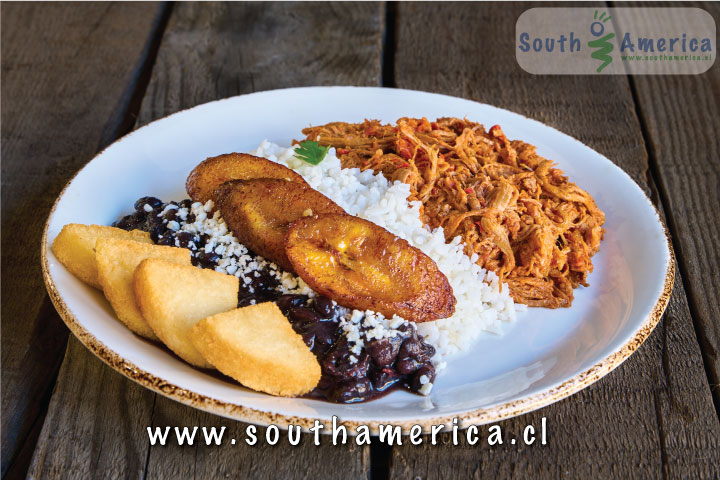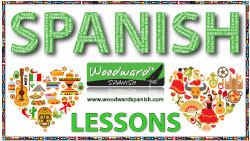Typical Venezuelan Food
Venezuela
The cuisine in Venezuela has a lot of European influences (especially Italian, Spanish and French) and is quite flavourful. But you can also find indigenous as well as African influence. As Venezuela is such a large and diverse country, each region has its own distinctive regional cooking.
On the coast you will find high quality fish, shellfish, crayfish, fish soups as well as fish stews. Try the pargo (red snapper) or the dorado if you have the chance. Coconut is also part of some dishes.
In the Andean region the food is quite different. Even the most famous dish the "arepa" is not made of cornmeal but wheat. Here you can find cured meats and sausages which are sold in many rural villages. You should not miss the famous fresh trucha (trout) dishes which come from the many Andean streams and lakes.
The food in the Amazon region varies a lot from the rest of Venezuela. Besides the main ingredients like yucca, corn, beans and bananas some people even eat turtles, tapirs, monkeys birds and deep fried ants. But you could also live on Casabe, bread made out of yucca, if you decide you don't want to be too daring.
Meat lovers will enjoy the parillas (mixed grill) in Venezuela as the quality of meat is quite high and the prices are low. You can choose between muchacho (roast beef), solomo (sirloin) and lomito (steak).
AREPA: It is the most famous dish from Venezuela, and is a cornmeal cake that can be grilled, baked or fried. Unlike in neighbouring Colombia where it is normally eaten unadorned, here in Venezuela it is split open and filled with a variety of cheese and meats. Arepa is a basic part of the Venezuelan diet and is eaten in place of bread in most meals. We recommend filling it with a mixture of cheese, eggs and bacon! See our Recipe for Arepas.
CACHAPA: Similar to the traditional American pancake (much thicker than an English pancake), it is made from a puree of corn, sugar, salt and oil. It is normally then folded over with a large piece of a soft white cheese inside. It is sometimes served with cream and jam. It is traditionally served with breakfast or at "once" a snack with tea. Sometimes it is accompanied by a side of fried pork. (We have yet to meet a gringo who truly enjoyed this chunk of pork)
CACHITOS DE JAMÓN: Is a snack which is very similar to the French croissant filled with chopped ham and or cheese.
CASABE: This type of bread, which is made out of yucca, is considered the oldest bread in the Americas. Rich in fibre and minerals the Venezuelans consume more than 30,000kg of casabe each year.
CHIVO AL COCO: (or Chivo en coco) is a coastal region specialty and contains pieces of shredded goat cooked in coconut milk. It will be served with mofongo which is fried, mashed green bananas.
EMPANADAS: The empanadas in Venezuela are deep fried, stuffed corn flour patties. Depending on the region you can even find shark, clams or other types of seafood fillings - especially in coastal regions like Margarita Island. The most typical empanadas are those filled with cheese and minced meat.
ENSALADA CAPRESE: This famous Italian dish is very popular in Venezuela as well. The caprese salad consists of tomato, mozzarella cheese and fresh basil.
GUASACACA: Is the queen of the sauces in Venezuela. It is quite spicy and will normally be served with meat, chicken, empanadas and arepas. It is made with avocado, parsley, coriander, onions, peppers and garlic.
HALLACA: There is nothing as important to Venezuelan cuisine as the hallaca. The process is incredibly laborious and involves the entire family; it is only done during the Christmas season, and generally in one go, to last the entire season. It is an incredibly social even, in which bundles of food are often exchanged between neighbours and friends. (The process is more of a competition than a gift exchange). The family forms a line starting with the filling of beef, pork, capers, raisins and olives that are then wrapped in cornmeal dough (the same dough used for arepas) and then bound with banana leaves. While generally men do not involve themselves in the cooking process, avoiding hallaca making is impossible and men are most commonly found cleaning the banana leaves and tying them together for steaming. There is always a familiar pride when it comes to hallaca making, with everyone quoting how their mother's hallacas are the best in the entire country. Perhaps there is some truth to this as no two families use the exact same recipe, and the filling sometimes differ throughout the regions. If you happen to visit Venezuela during the month of December you will be surprised to see how many generous people will gladly offer you a neatly wrapped package filled with a perfect balance of savoury and sweetness.
LENGUA DE RES: Cow tongue served in a vinaigrette.
MANDOCA: It is a donut of deep fried cornmeal. It is made with papelón or sugar cane pulp, and is served with bananas or plantains usually at breakfast.
ÑOQUIS: These potato pasta is another popular dish from Italy which is prominent in the centre of Venezuela.

PABELLÓN CRIOLLO: It is a simple dish of shredded beef and black beans served on a bed of white rice. It almost always is accompanied by a fried egg (Pabellón a Caballo) or with fried plantain slices (Pabellón con Barandas) .The meat is sometimes replaced by fish during lent. It is considered he Venezuelan national dish.
PAN DE JAMÓN: Is a typical dish that is served for Christmas. It is a long bread filled with cooked ham and raisins.
PASTA: It is said that Venezuela is the second country in the world for pasta - after Italy of course
PASTICHO: This name comes from the Italian word "pasticcio" which means lasagna. This is the Venezuelan version of lasagna.
PERICO: It is the Venezuelan type of scrambled eggs with onions and tomatoes. It is usually eaten at breakfast time - especially as a filling of the arepa or alone with bread.
PISCA ANDINA: This meal is a mixture of chicken stew, with diced potatoes, carrots, eggs, and pepper, and sometimes whatever else is left in the refrigerator. (Soups in general in Venezuela tend to be more lied thick stews that are cooked for hours until all the flavours melt together and the vegetables loose their form).
SOPA DE MONDONGO: It is a soup made with tripe (cow intestine and stomach) a mixture of root vegetables, cabbage and celery. Often the tripe is marinated in lemon juice or tamarind. Sometimes a beef bone is added for more flavour. It is usually consumed in the north-central regions and in the Llanos.
TAJADAS: In most of the typical meals you will be served tajadas on the side of the dish which are fried ripened plantain slices. Sometimes they will be referred as "barandas" which is slang for guard rails.
TEQUEÑO: The classic Venezuelan party food, this bite size treats are served all throughout the country from a few friends gathered in a home to elaborate wedding cocktail hours. It is a ball of dough filled with gooey white cheese that is then fried. Apparently every true Venezuelan party has to serve those.
TOSTONES: Are also known as Patacones in Venezuela and are Plantains fried twice! Eaten as a snack or a side with many meals, it is a very common throughout the country. The plantains are fried lightly for a minute on each side, then taken out of the pan to dry once they come out of the hot oil the second time and enjoy like chips.
YO-YO: In Venezuela, a yo-yo is a traditional dish made of two short slices of fried ripened plantain placed on top of each other with local soft white cheese in the middle (in a sandwich-like fashion) and held together with toothpicks. The arrangement is dipped in beaten eggs and fried again until the cheese melts and the yo-yo acquires a deep golden hue. They are served as sides or entrees.
Desserts
BESITO DE COCO: Are popular round coconut cookies
BIEN ME SABE: This dessert which literally can be translated to "it tastes good to me" has been well known in Venezuela since the colonial times. It is a sponge cake bathed in liquor and layered with coconut cream filling and topped with meringue
CANNOLI: Cannoli siciliano is a pastry tube filled with ricotta cheese and honey or chocolate.
DULCE DE LECHE: Is found in all of South America. The version in Venezuela is also called arequipe and is mainly produced in the northern town of Coro. You can find the pure variety of dulce de leche or the version with chocolate. It is basically sweetened milk that has been carefully cooked until you receive a brown jam that tastes a little bit like caramel. An easy way of preparing it is to cook sweetened condense milk for a couple of hours.
DULCE DE LECHOZA: This is a typical dessert served on Christmas. It is made of green papaya and brown sugar which is slowly cooked for hours and is served cold.
QUESILLO: Similar to flan, it is made with egg yolks and syrup. Contrary to the name, there is no cheese. Be careful though, outside of Venezuela the same name refers to a cheese dish rather than a dessert.
Next Activity
Try our interactive game about Typical Venezuelan Food. How many dishes can you get correct?
If anyone to learn more about typical Venezuelan Drinks, you will find a list at: Venezuelan Drinks
65 Classic Recipes from Colombia and Venezuela
If you found this guide about Venezuelan Food interesting or useful, let others know about it:


